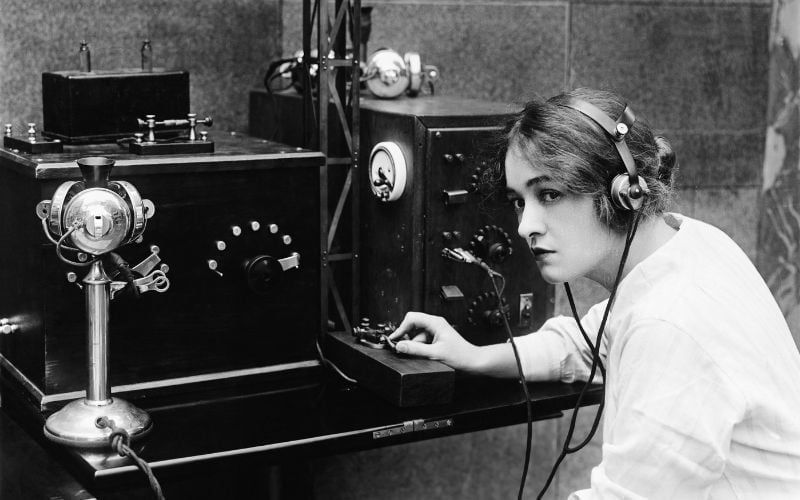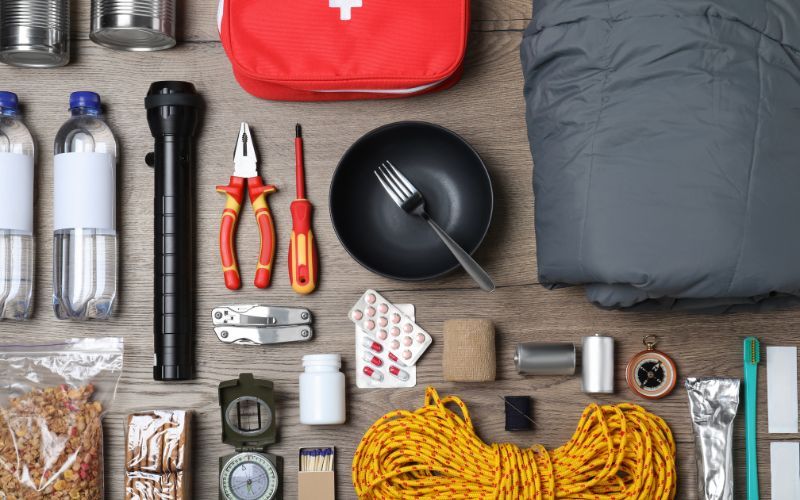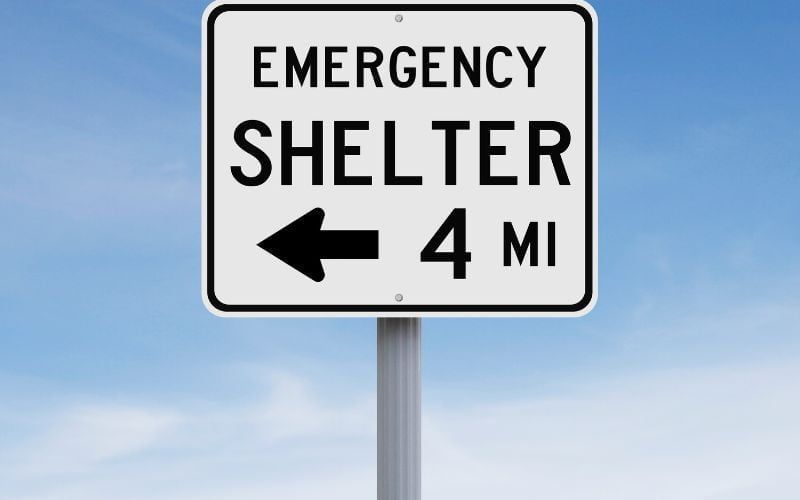
First Aid Kits : Your Comprehensive Guide to Safety and Super Preparedness 2023
First Aid Kits – In a world filled with uncertainties, accidents, and unforeseen emergencies can strike at any moment. During these critical times, having a well-equipped First Aid Kits at your disposal is not just a convenience; it’s a lifeline. First Aid Kits are your essential companions in times of need, providing immediate care and comfort until professional help arrives.
This comprehensive guide explores the world of First Aid Kits, a vital sub-category of Safety & First Aid. We’ll delve into their significance, discuss the essential contents, guide you on how to choose the right kit for your needs, and offer valuable insights on maintaining and using them effectively. Whether you’re at home, on the road, exploring the outdoors, or at the workplace, a well-prepared First Aid Kits can be the difference between a minor inconvenience and a life-saving resource.

Table of Contents
The Significance of First Aid Kits
First Aid Kits are far more than just boxes filled with medical supplies; they are invaluable tools designed to address a wide range of injuries and emergencies. Here’s why First Aid Kits are of paramount importance:
- Immediate Response: Accidents and medical emergencies can happen suddenly and without warning. First Aid Kits empower individuals to provide immediate medical assistance, potentially preventing injuries from worsening and saving lives.
- Versatility: These kits are meticulously curated to handle diverse types of injuries and medical conditions. From minor cuts and scrapes to more severe incidents like fractures or cardiac events, First Aid Kits contain essential supplies to manage various situations effectively.
- Infection Prevention: Properly cleaning and dressing wounds with First Aid Kit supplies can significantly reduce the risk of infection, particularly in remote or emergency situations.
- Stabilizing Vital Signs: First Aid Kits often include items for stabilizing vital signs, such as bandages for controlling bleeding or CPR masks for assisting with respiration.
- Bridge to Professional Care: In many cases, professional medical assistance may not be immediately available. First Aid Kits bridge the gap between the occurrence of an injury or illness and the arrival of trained medical personnel, offering critical support during this crucial time.
Essential Contents of First Aid Kits
A well-prepared First Aid Kit should contain a variety of supplies to address different types of injuries and emergencies. Here’s an in-depth look at the essential contents:

- Adhesive Bandages: These are used to cover small cuts, blisters, and abrasions. Various sizes and shapes should be included to accommodate different wounds effectively.
- Sterile Gauze Pads and Rolls: These are indispensable for covering and dressing larger wounds. They help control bleeding and prevent contamination.
- Antiseptic Wipes and Solutions: Antiseptic wipes and solutions are crucial for cleaning wounds, preventing infection, and promoting a clean healing environment.
- Adhesive Tape: Adhesive tape is essential for securing bandages, gauze, and dressings in place, ensuring they remain effective.
- Scissors: Scissors are versatile tools for cutting tape, clothing, and bandages. They should have blunt ends to prevent accidental injury during use.
- Tweezers: Tweezers are useful for removing splinters, debris, or foreign objects from wounds safely and with precision.
- Cotton Balls and Swabs: These are used for cleaning wounds, applying ointments, and gently handling delicate areas.
- Instant Cold Packs: Instant cold packs provide immediate relief for swelling and pain caused by injuries such as sprains and strains.
- Elastic Bandages: Often referred to as “Ace” bandages, these provide support and compression for sprains and strains.
- Disposable Gloves: Disposable gloves are essential for infection control. They should be worn when administering first aid to protect both the caregiver and the patient.
- CPR Face Shield or Mask: A CPR face shield or mask is crucial for performing CPR safely, preventing direct mouth-to-mouth contact and reducing the risk of transmission of diseases.
- Thermometer: A thermometer helps monitor body temperature, which is vital for assessing fevers and heat-related illnesses.
- Pain Relievers: Over-the-counter pain relievers such as aspirin or ibuprofen can help alleviate pain and reduce fever.
- First Aid Manual: A comprehensive first aid manual provides guidance on how to use the kit’s contents and administer basic first aid. It can be a valuable resource for individuals who may not be well-versed in first aid procedures.
- Emergency Contact Information: Include a list of emergency contacts, including local hospitals, poison control centers, and personal medical information for quick reference in case of severe emergencies.
- Additional Supplies: Depending on specific needs and activities, consider adding items like eyewash, a flashlight with spare batteries, a notepad with a pen for documenting injuries and treatments, and any necessary medications or medical supplies for individuals with specific medical conditions or allergies.
Choosing the Right First Aid Kits
Selecting the right First Aid Kit hinges on various factors, including your environment, activities, and the number of potential users. Here are important considerations to guide your choice:

- Activity and Location: Tailor your kit’s contents to the activities you engage in and your location. For instance, a hiking kit may include supplies for addressing outdoor injuries like insect bites and poison ivy exposure, while a home kit may focus on everyday injuries such as cuts and burns.
- Number of Users: Determine how many people the kit will serve. Larger groups may require multiple kits or a more extensive kit to ensure there are enough supplies for everyone.
- Special Needs: If you or any potential users have specific medical conditions or allergies, customize the kit to accommodate those needs. Include necessary medications and equipment, and ensure that all users are aware of their locations within the kit.
- Expiration Dates: Regularly check the expiration dates on all items and replace any expired supplies. This ensures that the contents of the kit remain effective and safe to use when needed.
- Storage: Store the kit in a cool, dry place, and protect it from extreme temperatures, moisture, and direct sunlight. Proper storage helps maintain the integrity of the supplies, ensuring they are ready for use in emergencies.
Using and Maintaining Your First Aid Kits
A First Aid Kit is only as effective as its contents and the knowledge of those using it. Here are some crucial tips for using and maintaining your kit:
- Familiarize Yourself: Take the time to familiarize yourself with the contents and their intended uses. Ensure that everyone who may need to use the kit is aware of its contents and how to use them effectively.
- Regular Inspections: Perform regular inspections of your First Aid Kit to check for expired or damaged items. Replace any supplies that have reached their expiration dates or show signs of wear and tear.
- Training and Education: Consider taking a first aid and CPR course to gain the knowledge and skills needed to administer effective first aid in various situations. Knowledge is as essential as the supplies themselves.
- Documentation: Maintain a record of any first aid administered using the kit. This can be invaluable for medical professionals when providing further care.

Conclusion– First Aid Kits
A First Aid Kit is not just a collection of medical supplies; it’s a symbol of preparedness, care, and responsibility. It is your lifeline in times of emergencies and a vital resource that can make a significant difference in the outcome of injuries and medical situations. Whether you’re at home, on the road, in the great outdoors, or at the workplace, a well-prepared and well-maintained First Aid Kit is your first line of defense and a true lifesaver.
In this comprehensive guide, we’ve explored the significance of First Aid Kits, their essential contents, how to choose the right one, and the importance of using and maintaining them effectively. Remember that being prepared is not just a matter of chance; it’s a matter of choice. So, choose to be ready, choose to be safe, and let your First Aid Kit be your trusted companion when you need it most.



